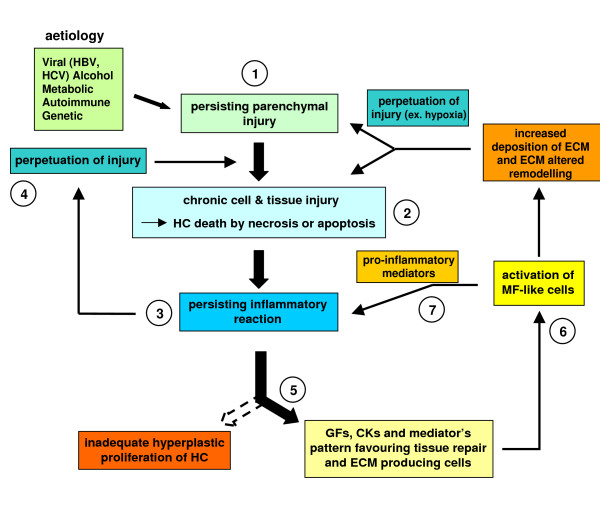Figure 13.
Schematic representation of events involved in fibrosclerotic development of CLDs. CLDs may involve different aetiological agents or conditions able to cause persisting parenchymal liver injury (1) and then hepatocyte (HC) cell death (either necrosis or apoptosis) (2). As a result, a persistent inflammatory reaction can occur (3), which may significantly affect the progression of the disease by either contributing to the perpetuation of injury (4) or 'creating' a growth factor, cytokine and mediator pattern favouring tissue repair and the activation of ECM-producing cells (5). This chronic scenario will lead to activation of myofibroblast-like cells that will contribute either to perpetuation of inflammation by releasing pro-inflammatory mediators (7) or to the wound healing response by excess and progressive accumulation of fibrillar (rich in collagen type I and III) extracellular matrix (ECM) components. If the aetiological agent or causal condition persists, the CLD can undergo a fibrosclerotic progression to cirrhosis and liver failure [74-81]. Cirrhosis in turn may be defined as an advanced end-stage of fibrosis, characterized by formation of regenerative nodules of parenchyma surrounded and separated by fibrotic septa, a scenario that is intrinsically associated with significant changes in hepatic angio-architecture [81-83].

